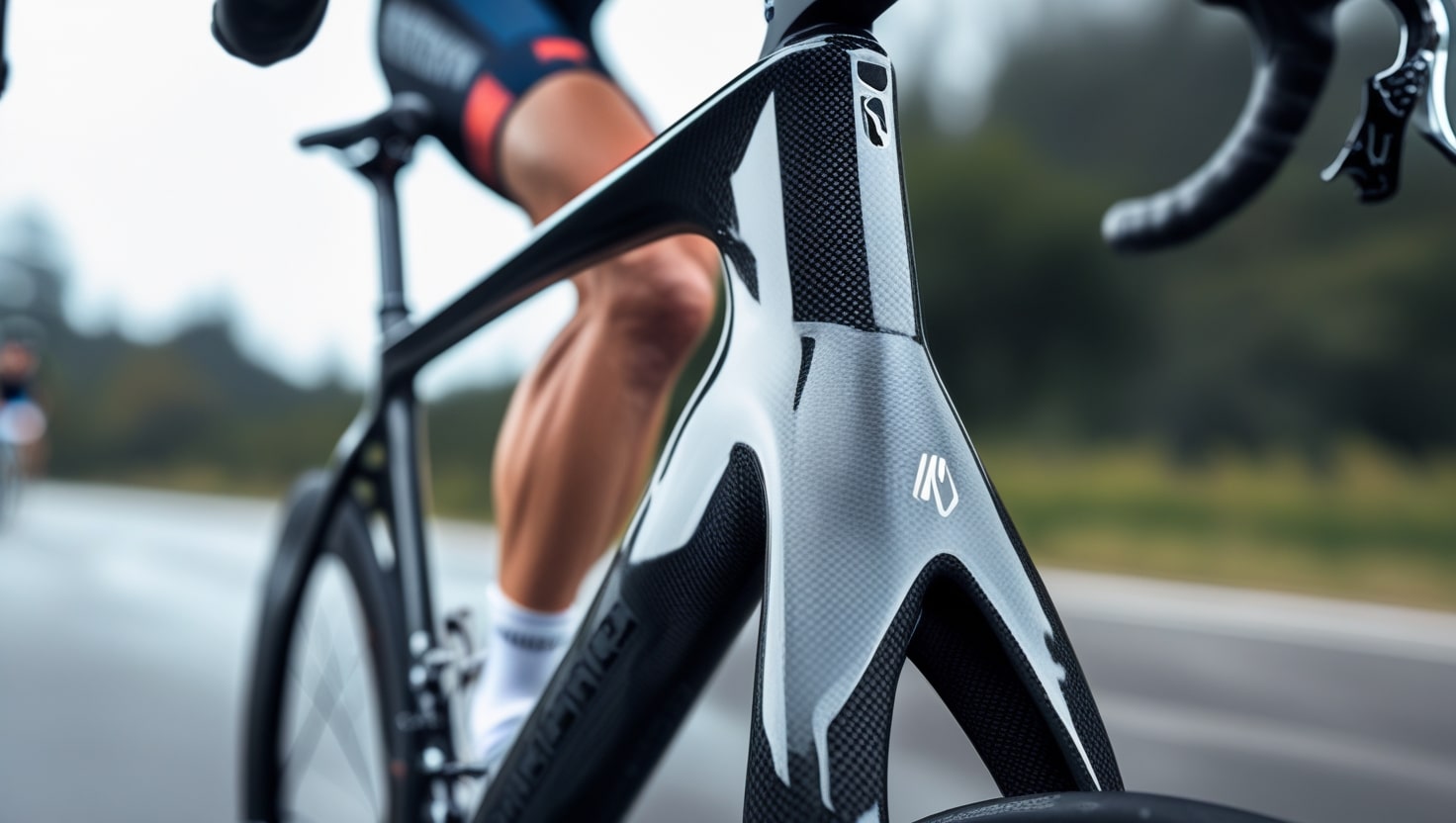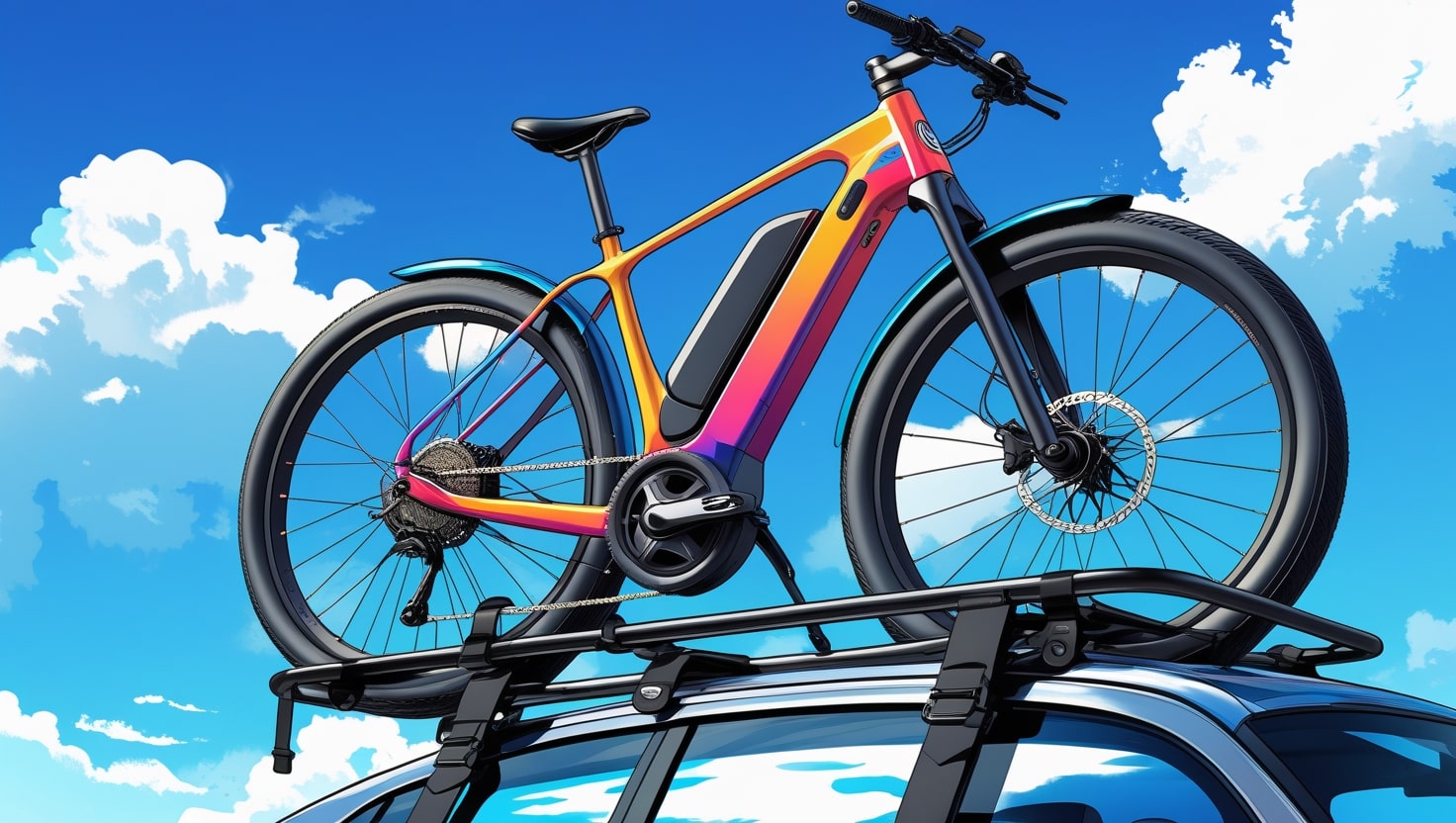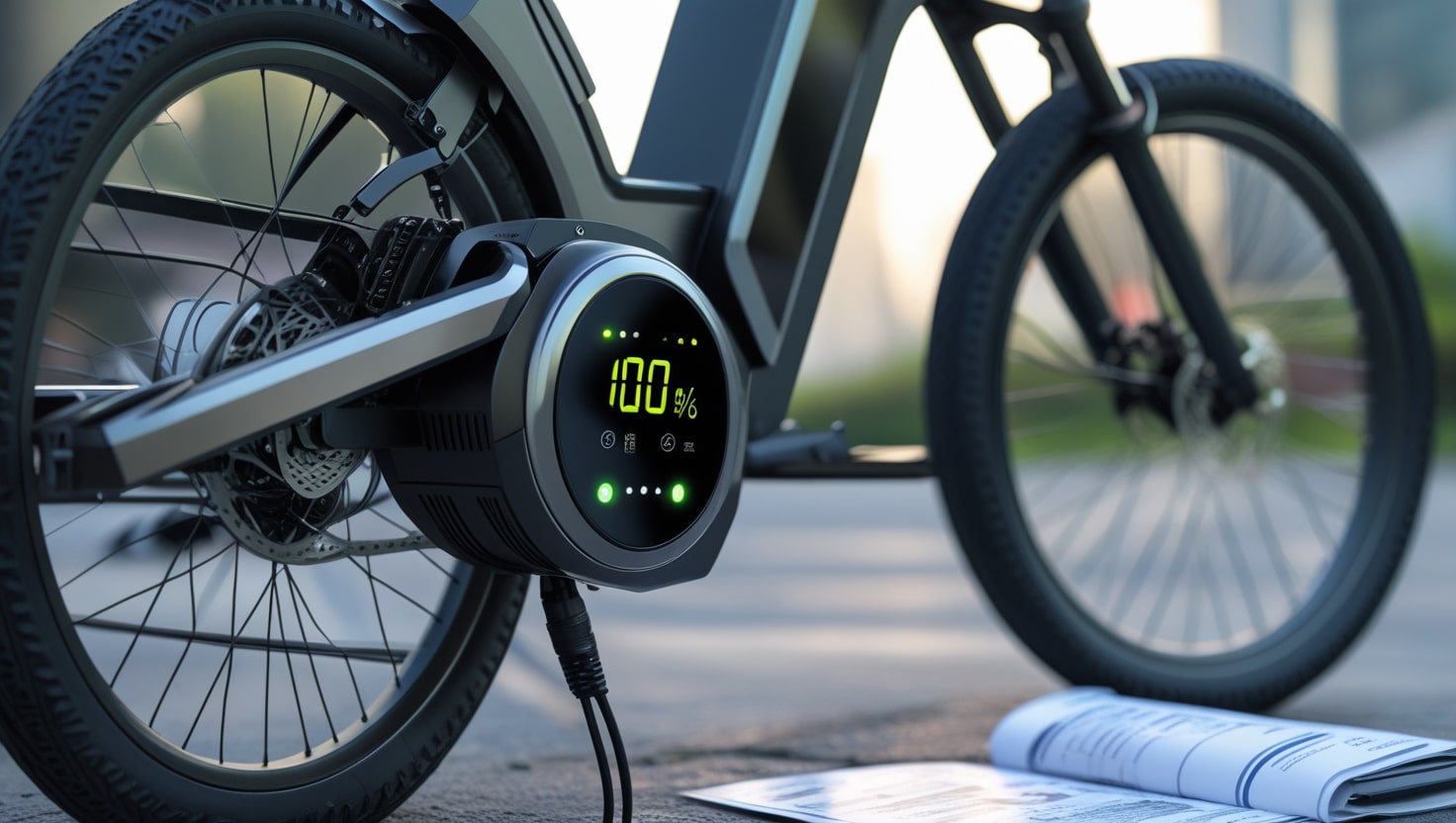When buying a used dirt bike, you want to be sure it’s in good mechanical condition and legit. The VIN (Vehicle Identification Number) is an essential tool to help ensure you’re not buying a stolen bike. This small yet powerful number is the missing piece in the total equation, making it possible to determine the history of the dirt bike. As someone who has worked hard for their money, I know how heartbreaking it is to discover you’ve bought a stolen vehicle. By discovering the dirt bike vin, you can protect your investment and avoid regret later.
Related: How Much for Dirt Bikes
What is a dirt bike VIN?
A dirt bike VIN (Vehicle Identification Number) is more than just a random string of characters. Before 1981, most bikes had a metal tag with a serial number of about eight or ten characters, riveted onto the frame. But after 1981, the NHTSA (National Highway Traffic Safety Administration) introduced the VIN system, a 17-character alphanumeric identifier. This number is now etched into the bike’s frame and is key to identifying essential details such as the year, model, and country where the bike was manufactured.
The VIN decoder is a crucial tool that explains what these characters mean. As someone who loves restoring bikes, I’ve often relied on this system to verify authenticity and cross-check details. Understanding the VIN not only gives peace of mind but also simplifies things when dealing with missing paperwork or tracking production specifics like assembly plants or style options.
VIN Decoder
Characters 1 – 3 (World Manufacturer Identifier):
- First character: Indicates the region where the bike was manufactured.
- Second character: Narrows the region further by identifying the country.
- Third character: Identifies the vehicle type.
Characters 4 – 9 (Vehicle Descriptor Section):
- Describes details such as model, engine size, and style options.
- Ninth character: A check digit to ensure the VIN is accurate.
Characters 10 – 17 (Vehicle Identifier Section):
- Tenth character: Indicates the marketing year of the bike.
- Characters 11-17: It includes information on the assembly facility, production details, and various available options.
Where is a dirt bike VIN located?
The VIN on a dirt bike is usually located on the right side of the handlebar stub, a short piece just above where the front fork is mounted on the frame. It sits behind the front number plate and is typically etched into the metal. To ensure authenticity, the VIN should never be altered or defaced, as this could indicate tampering or legal issues with the bike.

Engine number vs. VIN:
A dirt bike has both an engine number and a VIN, but they serve different purposes. The engine number is an 11-digit identifier, usually found on the right side of the engine case near the Kickstarter or where the e-start might be. Unlike the VIN, which has 17 characters, the engine number cannot be used to register ownership or identify the bike legally. When buying a used dirt bike, be cautious if the seller tries to use the engine number on the Bill of Sale instead of the VIN, especially if there’s missing paperwork. Only the VIN is valid for official documentation and ownership verification.
How to tell the age of a dirt bike:
The 10th digit of the VIN, when counting from the left, is key to determining the model year of a dirt bike. This digit denotes the year of the vehicle, but keep in mind that the model year might differ from the production year. For example, if a bike was manufactured in January 2019 and reached the showroom floor by October 2019, the two are the same. However, if the bike was manufactured in October 2019 and made it to the showroom in 2020, it will be assigned a 2020 date.
To be sure of the bike’s age, use a VIN decoder chart. It’s important to know that the numbers and letters in a VIN are not sequential, and certain letters like I, O, Q, U, and Z, along with the zero (0), are not used in the 10th-digit model year code. Referencing the decoder or even an image of a chart will help you calculate the age accurately.
Related: How to Get a Title for a Dirt Bike

| Year | Code | Year | Code | Year | Code |
|---|---|---|---|---|---|
| 1980 | A | 1994 | R | 2008 | 8 |
| 1981 | B | 1995 | S | 2009 | 9 |
| 1982 | C | 1996 | T | 2010 | A |
| 1983 | D | 1997 | V | 2011 | B |
| 1984 | E | 1998 | W | 2012 | C |
| 1985 | F | 1999 | X | 2013 | D |
| 1986 | G | 2000 | Y | 2014 | E |
| 1987 | H | 2001 | 1 | 2015 | F |
| 1988 | J | 2002 | 2 | 2016 | G |
| 1989 | K | 2003 | 3 | 2017 | H |
| 1990 | L | 2004 | 4 | 2018 | J |
| 1991 | M | 2005 | 5 | 2019 | K |
| 1992 | N | 2006 | 6 | 2020 | L |
| 1993 | P | 2007 | 7 | 2021 | N |
| 2022 | M | 2023 | P | 2024 | R |
| 2025 | S | 2026 | T | 2027 | V |
How do you know if a dirt bike is stolen?
When buying a used dirt bike, always check and double-check the VIN and associated paperwork. If the original owner is selling, they should have the MCO (Manufacturer’s Certificate of Origin) or CCO (Certificate of Origin) from the dealer, even if the bike was never registered. This document will list the bike’s VIN and is crucial for verifying its history. If there’s no paperwork or the seller isn’t the original owner, proceed with caution. Ensure the VIN on the frame hasn’t been defaced or altered, and run it through available databases for stolen dirt bikes to confirm its legitimacy.
Stolen dirt bike databases:
While no method is entirely foolproof, checking databases for stolen dirt bikes is a crucial step before buying a bike. Keep in mind, that there might be a lag time between when a dirt bike is reported stolen and when its VIN is entered into the database. For instance, the owner might first contact their insurance company, which could take a few days to respond before alerting the police. The police may also spend additional time to investigate before officially recording the theft.
Here are some databases designed to track stolen vehicles. Although most are designed for vehicles and not dirt bikes, a valid VIN should provide the same results regardless of vehicle type.
VINCheck | National Insurance Crime Bureau (NICB):
- The NICB, a not-for-profit organization, works with criminal divisions of insurance companies.
- Their database checks if a vehicle has been reported stolen, not recovered, or marked as a salvage vehicle.
National Highway Traffic Safety Administration (NHTSA):
- The NHTSA, under the Department of Transportation (DOT), provides a VIN decoder page that helps identify a vehicle’s details using its VIN.
National Motor Vehicle Title Information System (NMVTIS):
- Managed by the Department of Justice (DOJ), the NMVTIS collaborates with the American Association of Motor Vehicle Administrators (AAMVA).
- It offers detailed reports through authorized third parties, with fees ranging from $2.99 to $12.99 per report.
CycleVIN:
- A specialized database for dirt bikes, ATVs, and snowmobiles.
- The site charges a $25 fee for a detailed report on a VIN, offering insights tailored for non-automobile vehicles.

What Is a Motorcycle VIN and Why Is It Important?
A vehicle identification number (VIN) serves as a unique identifier for a motorcycle, much like fingerprints are unique to individuals. This is a reliable way to verify the bike’s identity. However, thieves and fraudsters often clone or duplicate VINs to hide their tracks and disguise stolen or salvaged bikes. Seeing two motorcycles with the same VIN is a red flag—one is likely forged. As skills in forgery improve, detecting these scams has become even harder, making a trustworthy VIN Checker essential.
Our FREE VIN Checker can help you spot scams and avoid costly mistakes. Whether you’re buying an expensive model or a throwaway or getaway bike, using the right tools and data ensures you get the real deal. Taking this step not only helps you identify fraud but also gives you confidence in your purchase.
Why do I need a Motorcycle VIN Check?
- Verify ownership history, including the number of previous owners, duration of ownership, and registration details such as city and state.
- Check the odometer reading to ensure it hasn’t been tampered with by shady motorcycle sellers trying to spin the numbers to increase the vehicle’s selling price.
- Identify any recalls or defects with alerts about open safety issues, helping you address potential risks before purchasing.
- Review lien and loan records to ensure there are no outstanding liens or financial liabilities tied to the motorcycle.
- Confirm the current warranty or any existing warranties, and check for manufacturer recalls to know if the repairs are necessary and up-to-date.
- Discover the previous functions of the motorcycle, such as whether it was a leased vehicle, which might affect its condition.
- Access additional vehicle data, including specifications, fuel efficiency, market value, ownership cost, title brands, safety ratings, insurance, repairs, and maintenance records.
Where can I find my ATV VIN?
- ATV VINs are often stamped on the side or front frame rails, depending on the model, making them accessible for quick checks.
- On a KYMCO ATV, like the KYMCO MXU300, the VIN location is on the front frame rail, ensuring easy identification during inspections.
- For a Yamaha ATV, such as the Yamaha Raptor 700, the VIN is stamped on the left frame rail, positioned just beneath the shifter for convenience.
Related: How Fast Do a 125cc Dirt Bike Go?

Where can I find my Motorcycle VIN?
Motorcycle VINs are usually engraved on the steering neck, which is placed just behind the front fork and the headlight (if the motorcycle is installed).
On a Kawasaki motorcycle, such as the Kawasaki KLX140, the VIN location is also on the steering neck, ensuring easy accessibility for verification.
- For a Suzuki motorcycle, like the Suzuki RMZ-250, the VIN is similarly stamped on the steering neck, making it a standard placement for most motorcycles.
Where can I find my Scooter VIN?
The VINs on a scooter are usually stamped into the frame rails, either on the left or right side. To locate the VIN, you may need to remove some bodywork for better visibility. Many scooters also include an identification plate or sticker to help with scooter identification. For example, the KYMCO Scooter VIN Location on the KYMCO Compagno 110 is on an identification plate that is riveted to the right side of the frame.

Where can I find my Side by Side VIN?
KYMCO UTV VIN Location:
The VIN on a KYMCO UXV500 Side by Side is stamped into the frame rail and is located in the front right wheel well. Make sure to check both the front and rear wheel wells, as well as the right or left side of the vehicle.Note:
In 1981, the United States National Highway Traffic Safety Administration (NHTSA) introduced a standardized 17-character VIN. Certain letters like I, I, O, o, Q, and q are not used to prevent confusion with the numerals 1 and 0.These 17 characters are divided up into three groups:
Global Manufacturer Identifier: Specifies the manufacturer and country where the vehicle was manufactured.
- Vehicle Descriptor Section:
Provides information about the model, engine specifications, and body design.
- Vehicle Identifier Section:
Contains unique details such as serial number and manufacturing facility.
Related: Can You Ride Dirt Bikes on the Road?
Let’s explain each character in detail so you can fully understand what it represents.
Character 1:
The first character of the VIN tells the region where the motorcycle or vehicle was manufactured. For example, 1, 2, 3, 4, or 5 indicates North America, while J, K, L, M, N, P, or R points to Asia.Character 2:
The second character, when combined with the first, denotes the specific country of manufacture. For instance, a BMW motorcycle may be made in Mexico, or a Japanese ATV might come from Canada.Character 3:
The third character is used by power sports manufacturers to identify the vehicle type, such as a motorcycle, ATV, or scooter.Characters 4 – 9:
These characters make up the Vehicle Descriptor Section. They detail the model, engine size, body style, and other options. The 9th character is a check digit used to determine if the VIN is correct, based on a Weight Factor Table.Characters 10 – 17:
Known as the Vehicle Identifier Section, the 10th character indicates the marketing model year, which may differ from the production year. For instance, a 2014 Honda CBR600RR might have a production date of 2013. Characters 11 through 17 provide details on the assembly facility, available options, and the production number on the assembly line.
Related: 14 Best dirt bike trails in Oklahoma
FAQs
How do I check the VIN on a motorcycle?
To check the VIN on a motorcycle, first locate the 17-character VIN on the bike, typically found on the frame or steering head. Once you’ve found it, enter the VIN into a reliable VIN decoding tool like VinCheck.info. This tool provides detailed information about the motorcycle’s specifications, history, and condition, helping you make informed decisions.
How can I check the VIN number for free?
To check a VIN number for free, use a reliable online VIN decoding tool like VinCheck.info. This tool provides detailed information about the vehicle, including its specifications, history, and condition.
Can I check if a motorcycle is stolen?
You can quickly find out if a bike has been stolen by using its VIN in a trusted online database. Services like the National Insurance Crime Bureau (NICB) or VinCheck.info offer a free VIN check to determine if the motorcycle has been reported stolen.
What is the best VIN report for motorcycles?
A high-quality VIN report for motorcycles provides complete information about the vehicle, such as its specifications, past ownership, title details, and accident history. It also covers flood or salvage history, odometer readings, lien and loan records, ownership costs, and existing warranties. Additional insights such as recalls, market value, sales history, equipment, fuel efficiency, and safety ratings make the report complete. Trusted providers like Carfax, AutoCheck, and VinCheck.info offer reliable and thorough VIN reports to ensure you make an informed decision.
How much does a motorcycle cost?
Prices for new motorcycles range from $3,000 to $18,000, depending on the model and features. As of 2023, the average cost of a new bike is around $11,000. On the other hand, used motorcycles are significantly cheaper, and you can find a clean unit for as little as a few hundred dollars, making them a great option for budget-conscious buyers.
How long is the Motorcycle's VIN number?
A motorcycle’s VIN number is typically 17 digits long, as required by the standardized system introduced in 1981. However, models manufactured prior to this year may have fewer digits, as the format was not yet consistent.
What is the average annual mileage for a motorcycle?
The average annual mileage for a motorcycle is typically between 2,000 and 5,000 miles, as many bikes are used for recreational activities rather than daily transportation. This is much fewer miles compared to cars, which are more practical and versatile, often traveling between 10,000 and 16,000 miles annually.







